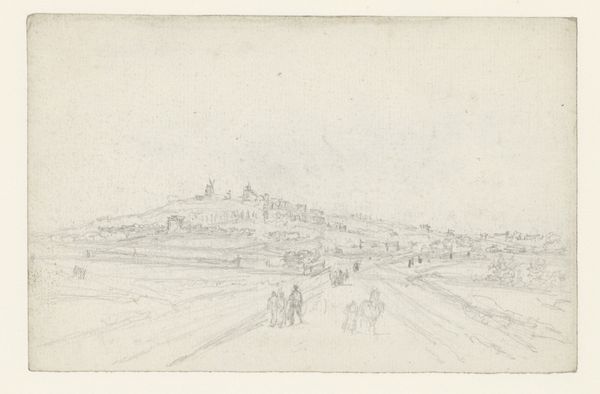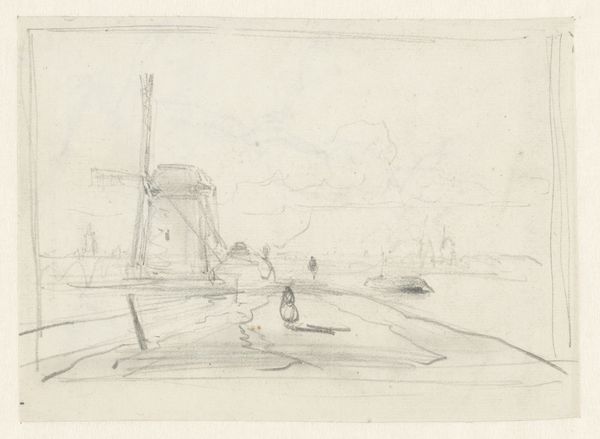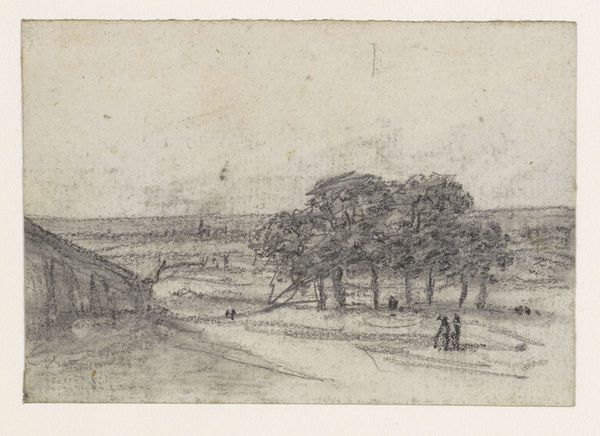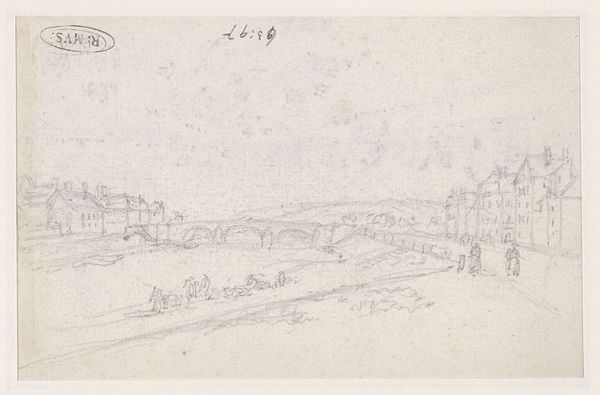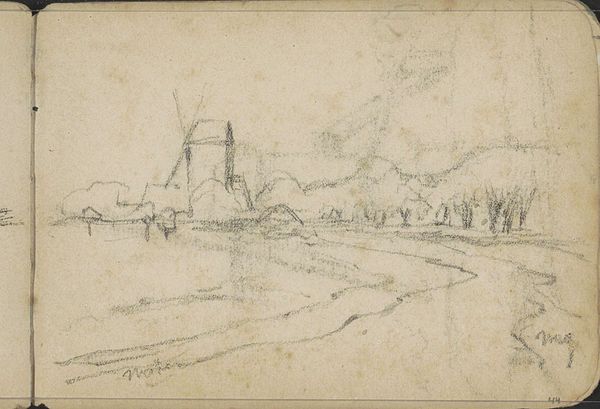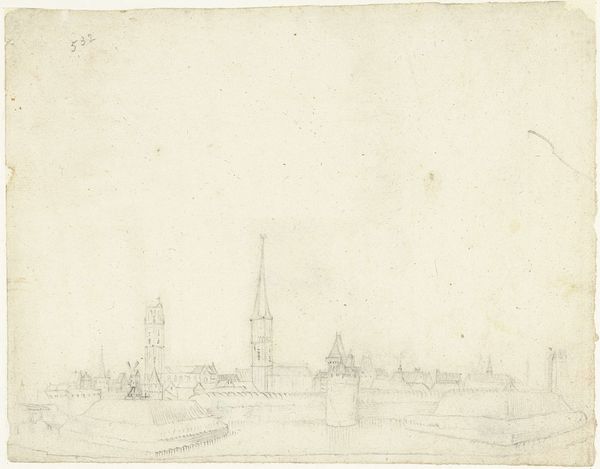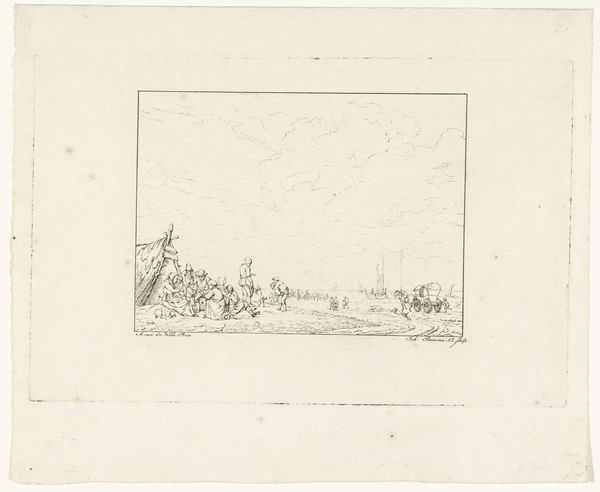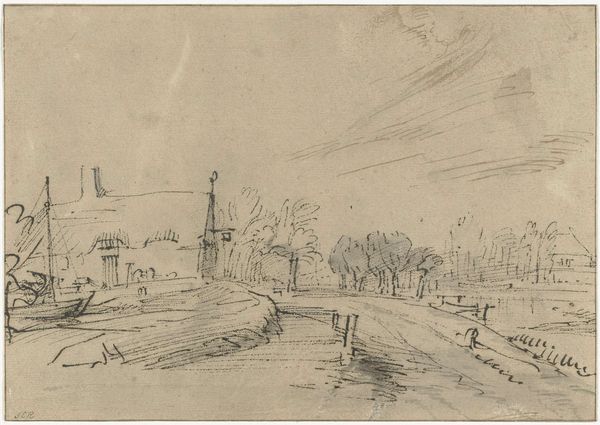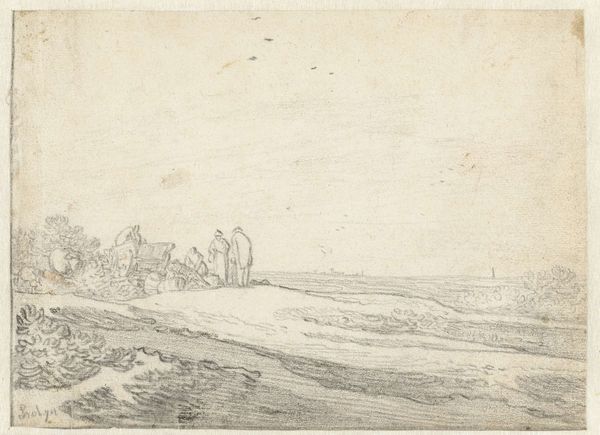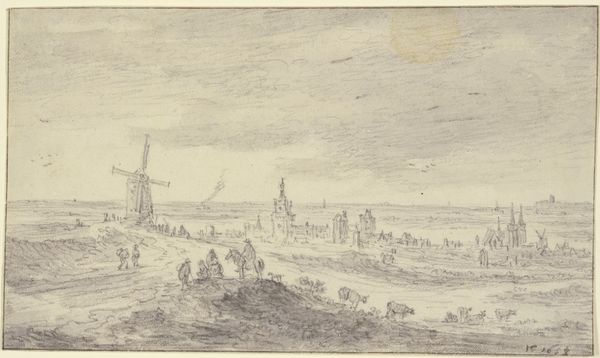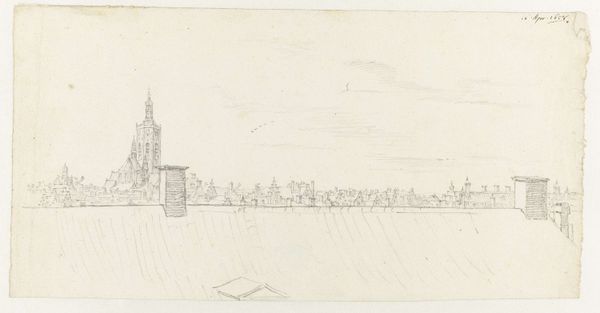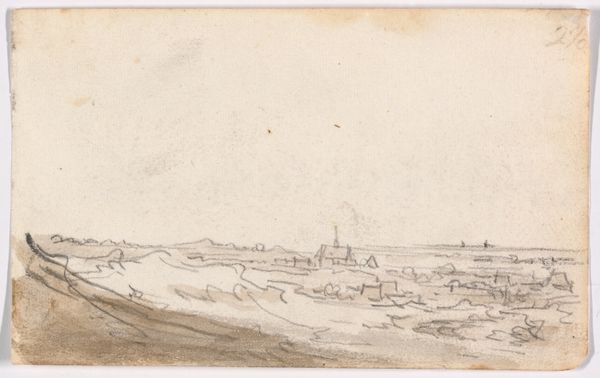
Trekvaart en koepel van Caan aan de vaart van Den Haag naar Delft c. 1785 - 1837
0:00
0:00
drawing, pencil
#
drawing
#
aged paper
#
light pencil work
#
sketch book
#
landscape
#
personal sketchbook
#
idea generation sketch
#
sketchwork
#
pencil
#
line
#
sketchbook drawing
#
storyboard and sketchbook work
#
sketchbook art
#
realism
#
initial sketch
Dimensions: height 69 mm, width 95 mm
Copyright: Rijks Museum: Open Domain
Editor: This is "Trekvaart en koepel van Caan aan de vaart van Den Haag naar Delft," a pencil drawing by Ernst Willem Jan Bagelaar, dating from around 1785 to 1837. It has this wonderful, delicate feel; it's clearly a sketch. What jumps out to you when you see this piece? Curator: Well, immediately, the materiality grabs my attention. It's pencil on paper, which suggests a quick, portable mode of production. Not an oil painting meant for a salon, but a readily produced commodity. What does this suggest about the artist's intent and potential audience? Was this intended for sale, or personal use? Editor: Hmm, I guess that’s right! It's not monumental, right? But it is skillfully done! It's a whole landscape in miniature. Curator: Exactly. Consider the role of the pencil itself, industrialized graphite, readily available during the period. Not charcoal made at home but a manufactured thing sold, and bought, so consider who had access to this tool and the resources for art-making? Then look at the windmills; they're part of the productive landscape. What is the relationship between this drawing and industrialization? It’s not just about the beauty, is it, but also a reflection of these technological advances? Editor: So, it’s like, not *just* about the pretty scene, but also who could make art, how they did it, and what it shows about Dutch industry and its effect on landscape, yes? Curator: Precisely! We see the means of production depicted within the scene and enacted in its making. Also note the inscription. A kind of authorship and provenance is included and meant for our observation as much as for later identification of the place depicted! Editor: That really reframes how I'm looking at this; seeing it as an object connected to a system rather than just a depiction. Thanks! Curator: And thanks for your observation, seeing and situating work like this offers such potential.
Comments
No comments
Be the first to comment and join the conversation on the ultimate creative platform.
